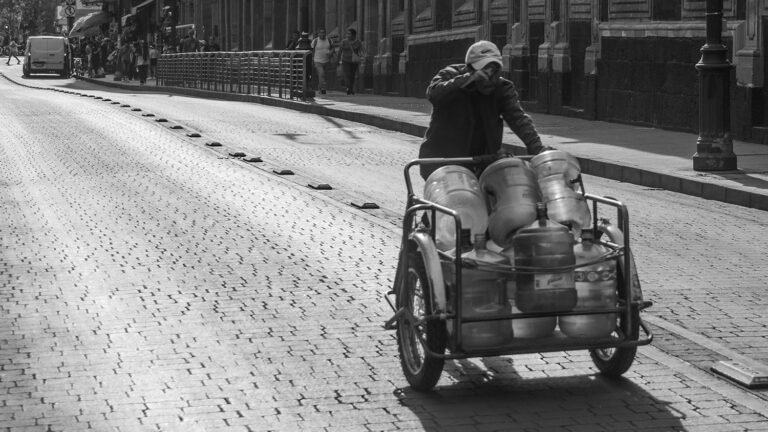The Last Drops of Mexico City
On a two-hour drive north of Mexico City into the state of Hidalgo, a deserted road cracked by the heat leads to the Endhó Dam, where shepherds graze their sheep nearby on the broken soil.
The landscape at one point looked post-apocalyptic, barren, and bleached by the sun’s relentless glare. Wastewater from Mexico City and several nearby factories, hospitals, a refinery, and a thermoelectric power station have contaminated the dammed water and wells that supply 15,000 people in surrounding communities. In the municipality of Tepetitlán, stray dogs, as thin as shadows, shuffle along the dusty streets.
A lake near the highly contaminated and dry Endhó pasture, May 12, 2024.
The artificial lake — or what was once an artificial lake — turned eventually into a thick, cracked layer of greenish sludge, emitting a stench that catches in the throat. The dam was even known by people in the area as “la cloaca más grande del mundo” — the world’s biggest sewer.
A shepherd couple (Jesús to the right) and a friend (left) on the cracked ground of the Endhó pasture where they graze their sheep, May 12, 2024.
Jesús and Gloria have lived here all their lives. Both in their 50s and sheltering under an umbrella, they watch as their flock of sheep grazes on the poisoned grass. They say they barely notice the smell anymore.
Jesús shows infected spots on his hands caused by water pollution at the completely dry Endhó Dam reservoir, May 12, 2024.
Jesús points to spots on his hands that look like white plaster but is a medicinal ointment covering his sores. “The doctor says the sores are from the toxic chemicals dumped here,” he says.
Independent scientific reports say the nearby soil contains numerous toxic substances dumped by the region’s chemical plants that cause skin allergies among the residents. It contains heavy metals like lead and mercury, as well as arsenic, cyanide, nitrates, phosphorus, manganese, nickel, phosphates, oils, and detergents far beyond environmental limits. Some data suggests that at least two generations of local inhabitants have serious health issues, including cancer and kidney and lung diseases.

